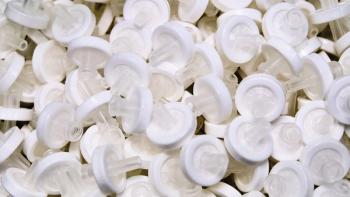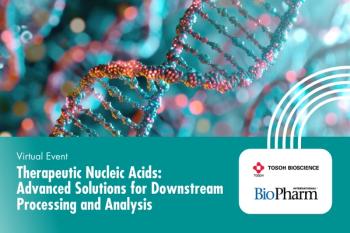
- BioPharm International-10-01-2012
- Volume 25
- Issue 10
Downstream Processing: A Primer
NIBRT's Ian Nelligan on what to expect when starting a downstream process.
In this second part of a series of primers with training experts from the National Institute for Bioprocessing Research and Training (NIBRT), Ian Nelligan, Technical and Training Director, discusses downstream processing. Part 1 on upstream processing appeared in the September issue of BioPharm International (1). NIBRT provides training, educational, and research solutions for the international bioprocessing industry in state-of-the-art facilities. Located in South Dublin, it is based on an innovative collaboration between University College Dublin, Trinity College Dublin, Dublin City University, and the Institute of Technology Sligo.
Ian Nelligan
PREPARATION AND PURIFICATION
BioPharm: Downstream processing is largely considered the second half of a typical biopharmaceutical manufacturing process. What are the typical steps involved in the downstream process?
Nelligan: The steps that biopharma manufacturers rely on for downstream processing are quite well established. A typical biopharmaceutial process uses three chromatographic column steps, each preceded by ultra filtration/diafiltration (UF/DF) of product. Each UF/DF pretreatment step is necessary to prepare the product for the following chromatography stage because all columns operate under differing pH or molarity conditions. Basically, the product needs to be primed for chromatography use beforehand. UF/DF concentrates and resuspends the product in the correct buffer before it is placed into the columns, making for a faster and more efficient process
In a typical three-stage downstream purification process, the strategy is as follows:
- First, a capture phase is used to isolate, concentrate, and stabilize the target product. This capture phase must be achieved quickly. This first step needs to be very selective because the product stream is weak (around 0.1%) and large product stream volumes are used.
- In the next, or intermediate, phase, the objective is to remove the bulk impurities, such as other proteins and nucleic acids, endotoxins, and viruses to increase product purity.
- In the final, or polishing, phase, the objective is to achieve high purity by removing any remaining trace impurities or closely related substances. The selection and optimum combination of purification techniques for the capture, intermediate purification, and polishing is crucial to ensuring a shorter time to pure product and good economy.
CHROMATOGRAPHY
BioPharm: What are the major challenges associated with the chromatography?
Nelligan: Yes, there are common challenges. For instance, the gel or resin used to recover and purify product can deteriorate with time; its activity is lost as the gel is recycled multiple times to maximize use. The gel is often made of tiny beads (a few microns in diameter) that tend to compress when packed. If too much pressure is applied, the beads in the gel can collapse, thereby producing small fragments or fines. Liquid flow through the columns is restricted by these fragments. As a result, capacity and activity can be lost. A typical chromatography column can comprise many hundreds of liters of gel but the bed height is rather flat (approximately 20 cm). Therefore, columns are shallow but wide (e.g., 2 m) to avoid over pressurization and compression of the resin beads.
The proteins we make are very delicate. The conditions on the columns can lead to protein degradation if they are not managed properly. Consider, for example, an everyday egg, which happens to be a protein covered in a hard shell for protection. If we shake the egg too much, it deforms. The process is irreversible.
Biopharmaceutical products are just as friable as the egg example. If we agitate a protein too much, expose it to air for too long, or fail to store it at the correct temperature, the protein can degrade and product loss can occur. At the end of a typical downstream process, the protein yield is often down to 60% of the starting concentration (i.e. for every kilogram processed, 40% is lost). Even though the industry spends a lot of time trying to optimize their processes to be efficient, these losses are difficult to recover.
BEST PRACTICES
BioPharm: Can you offer any best practices for embarking on a downstream manufacturing process overall?
Nelligan: Be open to change. The industry today is like the computer industry of the 1970s—we have seen a boom in technology that is not slowing down. Our knowledge about how to best complete bioprocessing steps increases day to day, and that knowledge is constantly being transferred into operations. Every day, we see new equipment arrive, better equipment, cheaper equipment—there are all sorts of innovations happening.
In the industry today, there is a huge worldwide demand for therapeutic protein drugs that is showing double digit growth. A lot of money is being invested in the industry in new products and processes, and at the same time, there is a drive to reduce cost, to improve productivity, and to become more efficient. We have passed the stage where, perhaps five or six years ago, it was important to make drugs at any price because they were so important. Now the goal is to make them as inexpensively and efficiently as possible.
The cost of goods is becoming more and more important, especially when trying to break into new markets. Customers are demanding that the price of biopharmaceutical products is reduced and better technology and more automated processes are developed to enable this. These are the pressures we face in the biopharmaceutical industry. The objective is to make more powerful, more affordable drug products going forward.
REFERENCE
1. "Upstream Processing: A Primer," BioPharm Intl. 25 (9) 62–64 (2012).
Articles in this issue
about 13 years ago
BioPharm International, October 2012 Issue (PDF)about 13 years ago
India Enforces Stricter Patent Lawsabout 13 years ago
A Manufacturing-Capacity Sharing Modelabout 13 years ago
FDA and the Importance of Confidentialityabout 13 years ago
New Era for Generic Drugsabout 13 years ago
Discovery Pipeline: Nanoparticles for Targeted Deliveryabout 13 years ago
Considerations in Vaccine Packaging and Delivery Systemsabout 13 years ago
Sizing the Market for Contract Manufacturingabout 13 years ago
Bringing Innovation to Neglected Disease R&DNewsletter
Stay at the forefront of biopharmaceutical innovation—subscribe to BioPharm International for expert insights on drug development, manufacturing, compliance, and more.




